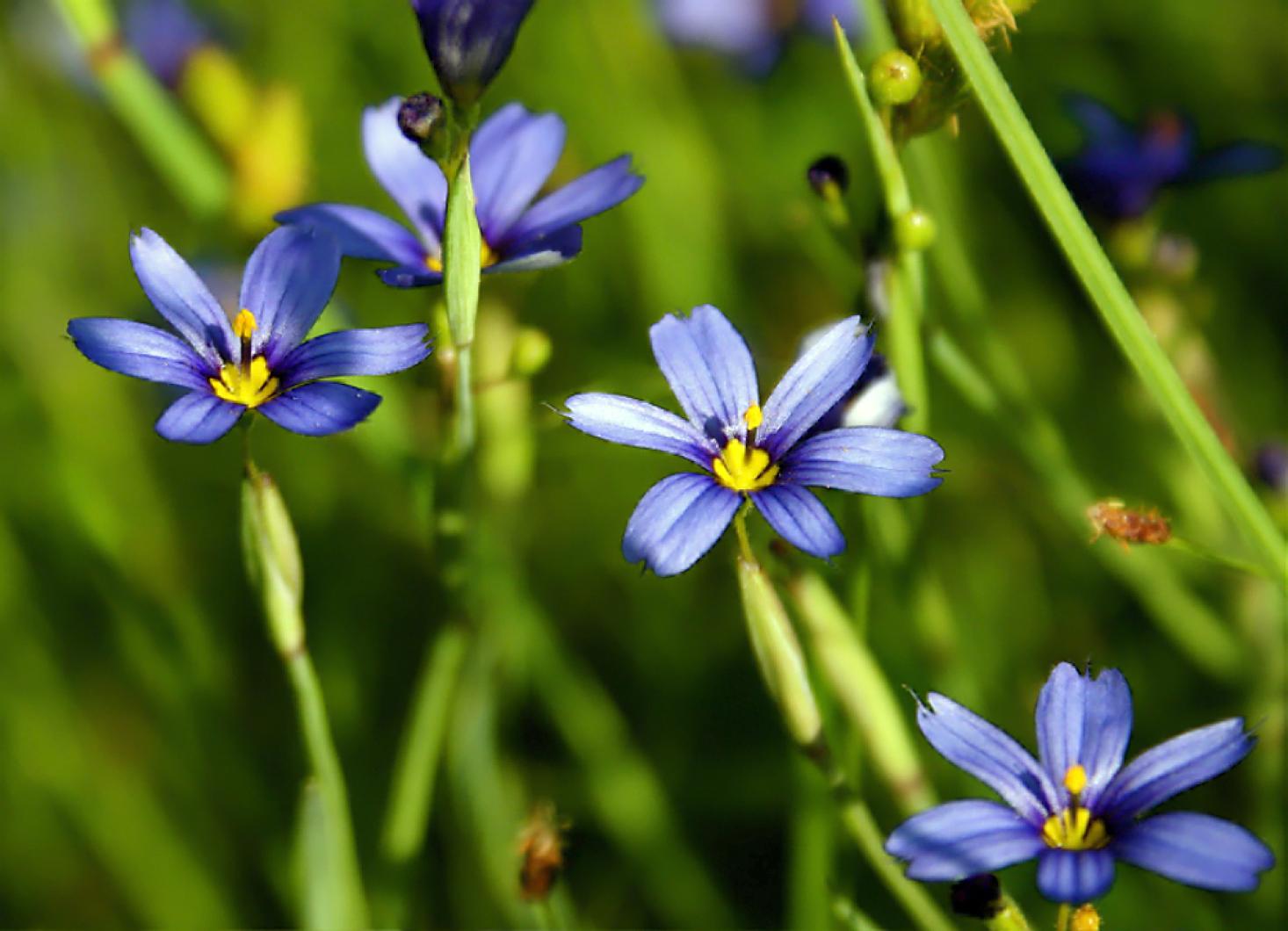The grass is always greener ... except when it is blue and not grass at all.
Blue-eyed grass is opening its eyes at a field near you. Delicate, subtle and not as it seems is an apt description of this pleasing plant.
First of all, it doesn’t have blue eyes. It does have blue-violet flowers — small, six-petaled blooms at the end of its slender stem. Its ‘eye’ is actually yellow, the center ‘iris’ of the flower. Second, the long slender grass is not a grass; rather, it is a modified narrow leaf. Blue-eyed grass is a member of the iris family, not the grass group.
While blue-eyed grass is misnamed and short-lived — it is only around for about a day, and is not open at night — don’t shed a tear for this ephemeral eye-catching bloom. It does have some interesting characteristics.
After it closes it floral eye, the blossom will become a small round seed capsule filled with black seeds ready to burst forth. Wild turkeys are known to nosh on these seeds, as will other ground nesting birds and some mammals. Native Americans fed it to horses to make them ‘fat and vicious,’ and also hung it in dwellings to ward off snakes. Pigs’ penchant for grubbing at this flower’s roots gave the plant its genus name, Sisyrinchium, which translates to swine snout.
There are four varieties of blue-eyed grass to look for on the Vineyard. The most common is the Eastern blue-eyed grass, but be on the lookout for its more rare siblings — stout, meadow and sandplain blue-eyed grasses. Seek the sandplain variety only on Martha’s Vineyard and Nantucket, since this species is found exclusively on these two Islands. It may think globally, but it definitely acts locally.
Others have been inspired by their own local varieties of blue-eyed grass. Robert James Waller wrote in the prologue to his book, The Bridges of Madison County: “There are songs that come from the blue-eyed grass, from the dust of a thousand country roads.” Blue-eyed grass is a star in more ways than one, since this plant is also called star grass and blue star.
Blue-eyed grasses are found mainly in fields. Thoreau gave this helpful hint: “You can cross the meadow dry shod by following the winding lead of the blue-eyed grass, which grows only on the firmer, more elevated and drier parts.” Useful to know after the rainy days we’ve had lately.
Rain or shine, blue-eyed grass will continue to adorn our fields and paths — so what that the name is completely erroneous? It is, at least, a reasonably good description of the plant’s appearance. To those who say that the grass is greener on the other side of the fence, I can confidently say, “Not in this case.”
Suzan Bellincampi is director of the Felix Neck Wildlife Sanctuary in Edgartown.




Comments
Comment policy »